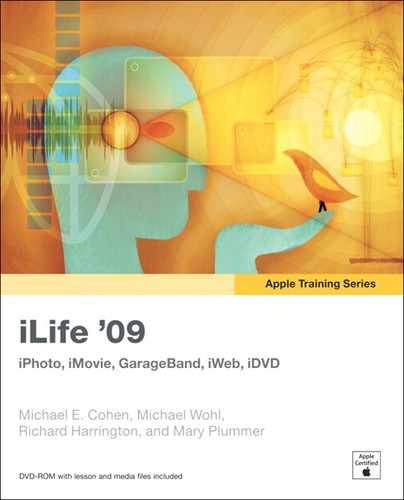Importing Video from a Camera 17
2 Insert the memory card into the card reader.
The card appears in iPhoto’s Source list under Devices just as a camera
does. Note, though, that the Mac also mounts the card on your desktop
just as it does an external hard drive or a thumb drive, and that the card in
the Source list has an Eject button next to it. You must explicitly eject the
card from your Mac before removing the card from the reader.
3 Import the photos from the card using either of iPhoto’s Import buttons
just as you would when importing photos from a camera.
You can import all the photos on the card or selected photos, and you can
choose either to keep or to delete the photos on the card after you import.
4 When you finish importing, click the Eject button beside the card in iPho-
to’s Source list and wait for the card to vanish from the list.
5 Remove the card from the card reader.
Importing Video from a Camera
Many digital cameras, including some mobile phone cameras, also have the
ability to take digital motion video. Such video is often captured at a lower
resolution and at a lower frame rate than the video produced by digital video
cameras and is usually of shorter duration due to capacity constraints. As you’ll
see later in this book, iMovie can quite readily use the digital video that you
import into iPhoto from your camera.
When you connect a camera or memory card that contains digital video to your
Mac, iPhoto can import it into the iPhoto library just as it does still pictures.
1 Connect your camera to your Mac, turn the camera on, and if iPhoto is
not set to open automatically, open it.
..................Content has been hidden....................
You can't read the all page of ebook, please click here login for view all page.
